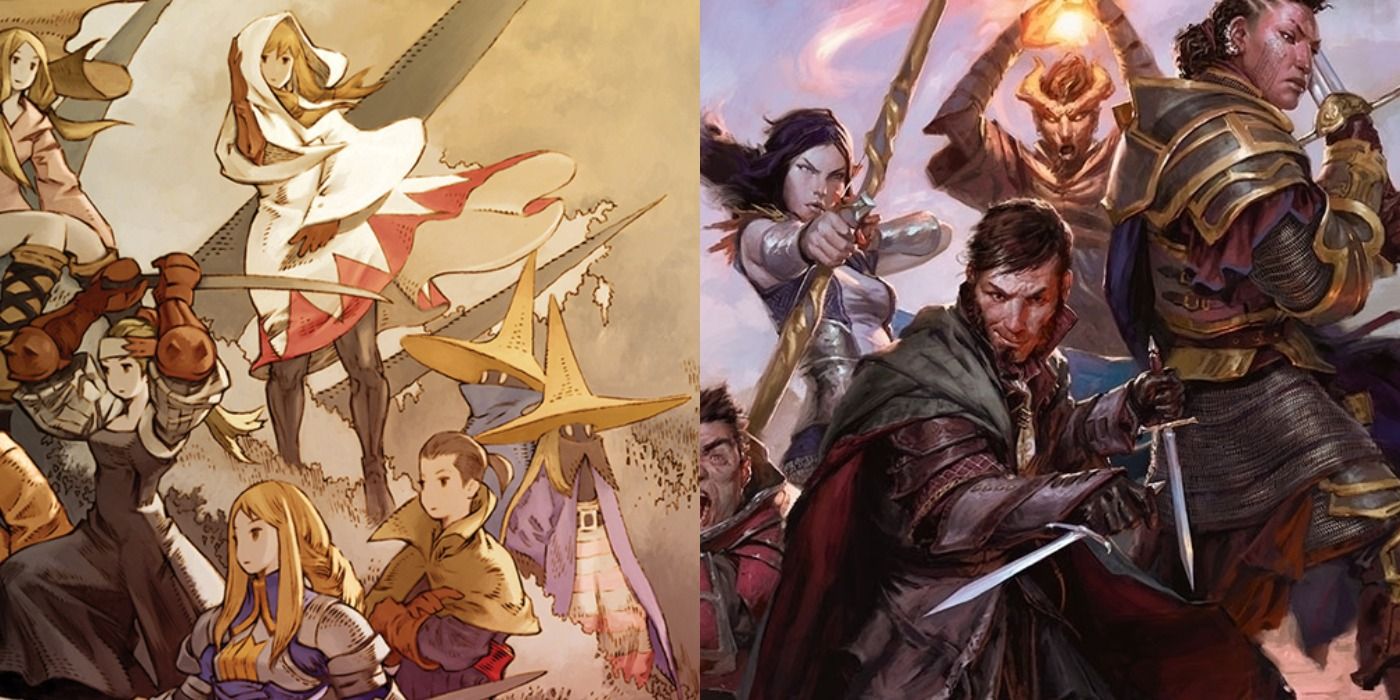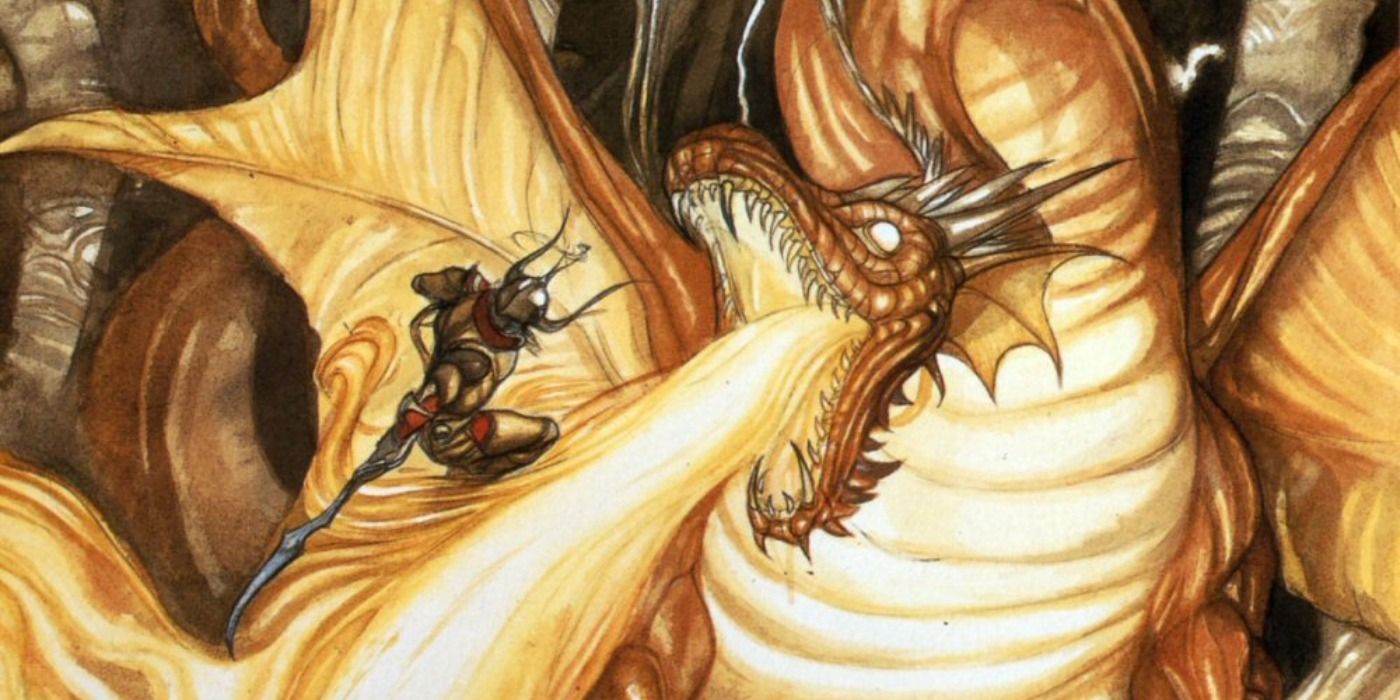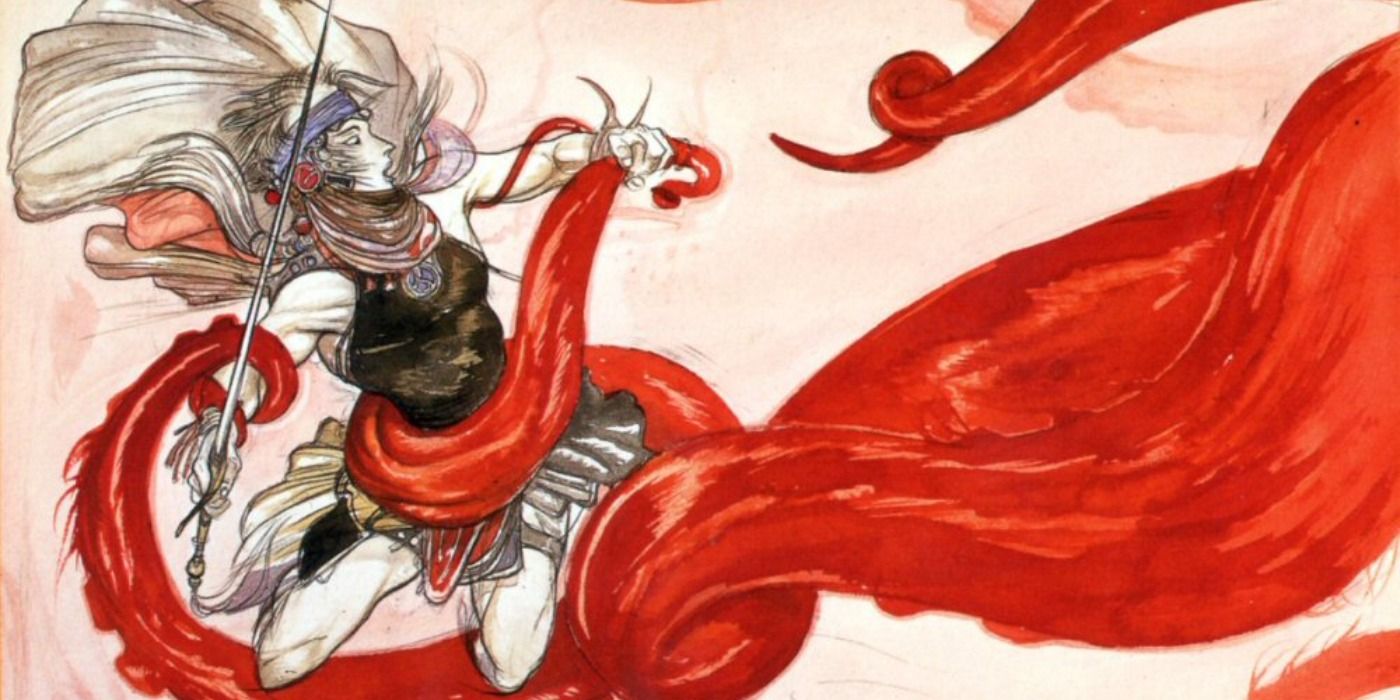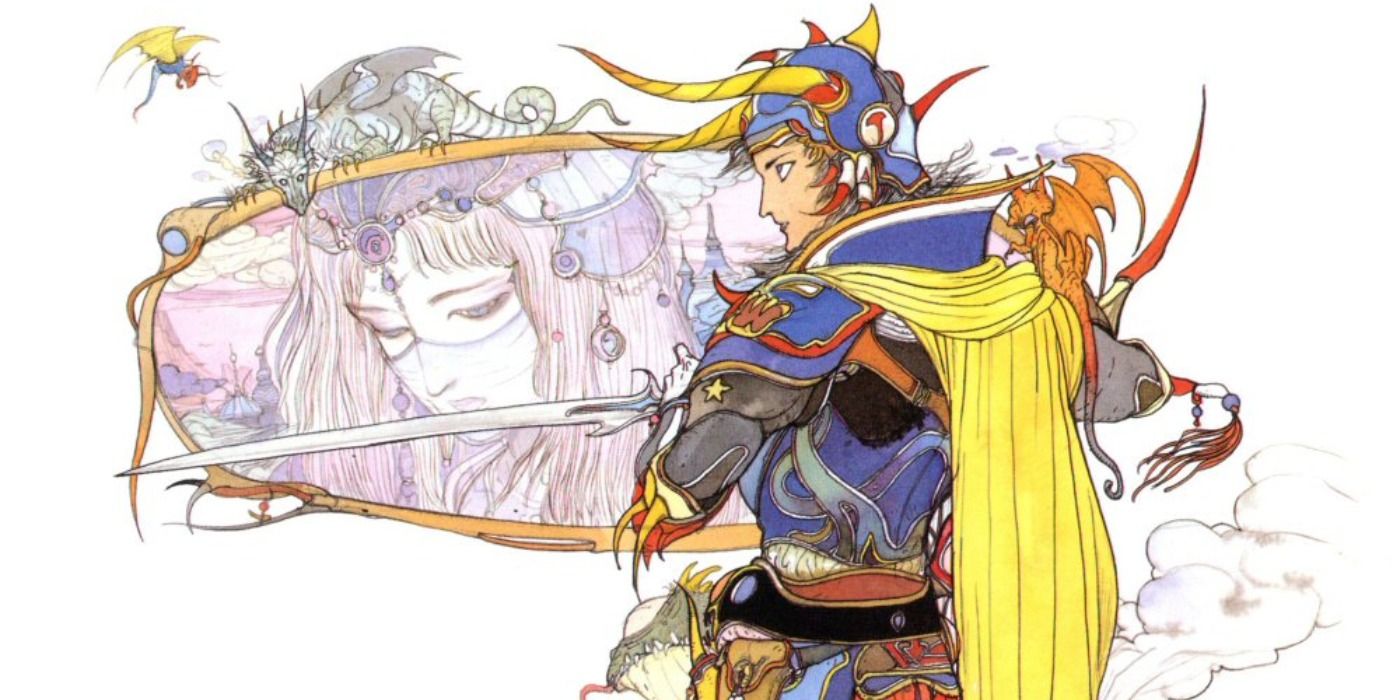The gameplay of the Final Fantasy franchise has been constantly evolving since the days of the NES, but the first entry in the series owes a lot to another game, as the character classes from Dungeons & Dragons were a major inspiration for the job system from the original Final Fantasy.
The job system from the Final Fantasy series has taken on different forms across the various entries, but it always involves tieing a character's abilities to their current role, like white mage having access to healing spells or a thief being able to steal items from enemies. This concept dates back to the original Final Fantasy when the four characters selected by the player were defined entirely by their job and nothing else. It wasn't until Final Fantasy II that the playable characters had a personality of their own.
Final Fantasy had six jobs available at the start of the game - warrior, thief, monk, black mage, white mage, and red mage. If the player completed the optional quest involving Bahamut, then these jobs would be updated to knight, ninja, master, black wizard, white wizard, and red wizard. The selection of these jobs is no coincidence, as they match the classes available in Basic Dungeons & Dragons and Advanced Dungeons & Dragons. The original Final Fantasy had to be changed, due to its close similarities to D&D, which didn't even extend to the class/job system.
Warrior/Knight - Fighter/Paladin
The warrior class is based on the fighter from Dungeons & Dragons, as they hit hard and have a ton of HP, but they lack any special abilities to call their own. The power of the fighter class is often dependent on gear, with magic items making them incredibly effective on the battlefield, but this also makes them expensive to kit out in comparison to other classes. This is exactly how the warrior works in Final Fantasy, as they require a ton of gil to maintain, but they are the hardiest and strongest job on the team.
Once the warrior has completed Bahamut's trial, they will be upgraded to a knight. The knight job gains the ability to cast low-level white magic spells. This means the knight is the equivalent to the paladin class from Dungeons & Dragons, which is also a heavy-hitting melee fighter but also has access to healing abilities and low-level cleric spells. The paladin class used to be heavily restricted in terms of minimum stat requirements and a necessary alignment, which might explain why it had to be unlocked in Final Fantasy.
Thief/Ninja - Monk/Master
The thief job in Final Fantasy lacks the ability to steal items from enemies, but its stats make it easier to avoid blows and escape from combat. The thief is one of the weaker jobs in Final Fantasy, which is reflected by how poor the thief class in Dungeons & Dragons was at the time. The original D&D thieves had some highly situational combat abilities (like backstab) and a chance to perform sneaky feats, like finding traps or opening locks. The problem was that they didn't last long in combat due to their poor HP & limited armor options, and all of their sneaky abilities were easy to emulate with spells.
This could be the reason why the Final Fantasy thief job was so poor, but it was worth sticking with, as it turns into the mighty ninja job. The ninja has a much better selection of weapons and can cast low-level black magic spells, making it one of the best jobs in the game. There were ninja classes in Dungeons & Dragons back then, but the Final Fantasy ninja more closely matches the assassin or bard in terms of abilities, and the creators might have decided to just give it more of an eastern feel.
The monk is a cheap job to maintain in Final Fantasy, as they are bare-fisted fighters with few combat options. This makes them incredibly fragile, but they will eventually outpace the other melee classes in terms of damage. This is similar to the monks from the older editions of Dungeons & Dragons, who were also referred to as mystics. The D&D monks gained access to incredibly powerful abilities at high levels (like Quivering Palm), but it could be a slog getting there. Monks generally required the player to have rolled at least four high stats to be manageable, as anything less makes them liable to be taken down easily. The fact that monks relied on hand-to-hand combat and couldn't wear armor meant that they had trouble at lower levels, but they received a huge power boost if they could survive into the mid/high levels.
The Spellcasters & Switch From Vancian To MP
The black mages & black magic are clearly inspired by the magic-user class from Dungeons & Dragons, as the spell selection involves magic that harms enemies and inflicts status effects. By the same token, the white mages & white magic are inspired by clerics from Dungeons & Dragons, as the spell selection involves magic that heals allies and provides buffs. The biggest reference to Dungeons & Dragons came in the form of spell slots, as the mages in Final Fantasy had to prepare their spells beforehand. This is a reference to the Vancian magic system used in the older editions of Dungeons & Dragons, where spellcasters had to memorize their magic the night before, and the spells were gone when cast and had to be memorized again. The spell slots system only lasted for a single game, and even the remakes of the original Final Fantasy dumped it and brought in the MP system from later titles.
The red mage class is meant to be a jack of all trades, as it has middling combat skills and can use both black & white magic, but at a lower level than the black mage and white mage. This could either be a reference to the bard class, which had a similar scattergun approach to its skills or to multiclassing. The ability to multiclass allowed players to take levels in different classes at the same time, but they leveled up at a slower rate. Multiclassing was a much bigger part of the older editions of Dungeons & Dragons, and it's possible that the red mage was a reference to the fighter/mage/thief of the day.
The Final Fantasy series started in the '80s as a digital attempt at recreating D&D, and it went on to become one of the biggest gaming franchises of all time. Dungeons & Dragons just had its best-ever year of sales, due to a growing presence in the online space. The two franchises may have grown apart in terms of similarities, but they are still beloved by gamers all over the world, even if the classes & jobs in both Final Fantasy and Dungeons & Dragons have evolved over the years.




